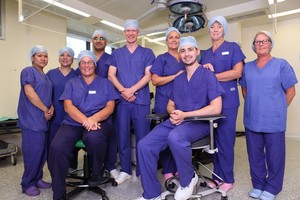
What is a Cataract?
A cataract is a clouding of the natural lens inside your eye. As the cataract starts to form it causes the lens to stiffen and this makes focusing on near objects more difficult. This leads to people needing reading glasses, a process called Presbyopia. Later the lens starts to become even cloudier and things become more blurred; at this stage the cloudy lens is called a cataract. Though cataracts usually form very slowly they can suddenly get a lot worse. Cataracts can often be corrected with glasses initially, but when even those can no longer improve your vision sufficiently you may require surgery.
Everyone will develop a cataract which will get cloudy enough to interfere with their vision if they live long enough.
What causes Cataracts?
There are many things that can bring on a cataract faster than it would normally develop. These include:
- Genetics (Cataracts can run in families)
- Diabetes
- Certain drugs, including steroids
- Severe eye injury
- Iritis
Even babies can develop cataracts, though these only develop if they are exposed to a significant infection during the pregnancy or have a major medical condition.
What are Cataract symptoms?
Cataracts usually cause a slow (over months or years) reduction in vision.
Symptoms include the following:
- Blurring of vision
- Glare, particularly at night
- Haloes and ghosting (shadows around objects)
- Rapid change in glasses prescription
- Washed out colour vision
Who can be treated?
Anyone can be treated. With modern surgical techniques a cataract can be removed from the eye and a replacement lens put in at any age and we no longer need to wait for it to cause significant visual problems.
If you would like improved vision and have early signs of cataract then you will need to discuss the options available with an Ophthalmic Surgeon (Eye Surgeon). You will be asked questions about your general health and the problems you are having with your vision. Your eyes will be examined to ensure they are otherwise healthy, and the shape of the eye will be measured so that the strength of the new artificial lens can be calculated. These measurements will also allow a prediction of whether you will require glasses after a standard operation.
If you wish to be independent of glasses after the surgery, either for distance vision or reading or both, then you may need a premium lens and the options available will also be discussed.
How is a cataract treated?
Removal of the cataract requires a small surgical procedure to be performed. A tiny hole is made in the eye, through which the old cloudy lens is removed and the new lens is inserted. In adults the operation is usually performed with the patient awake and the eye is thoroughly anaesthetised for the procedure. Sedation can be given for those who may be nervous.
Can I become completely free of glasses following cataract surgery?
Yes, it is possible to become glasses independent if your surgeon uses a multifocal intraocular lens. However, not all patients are suitable for this option.

